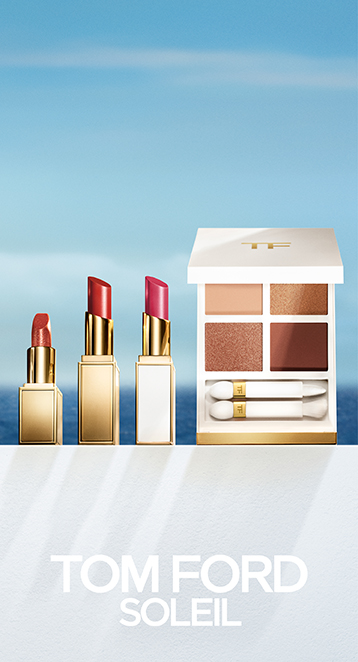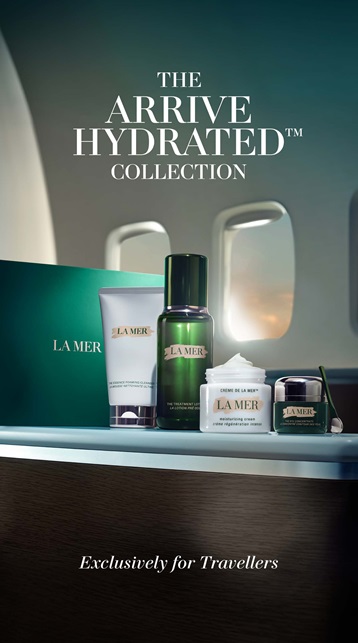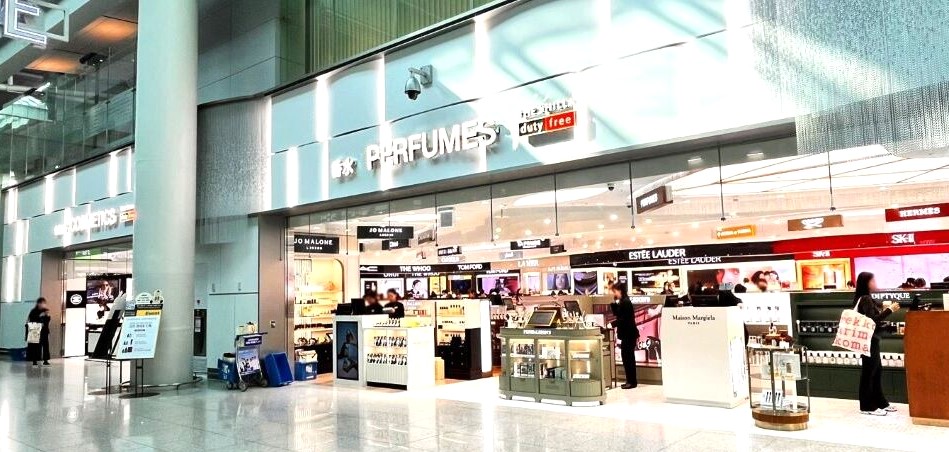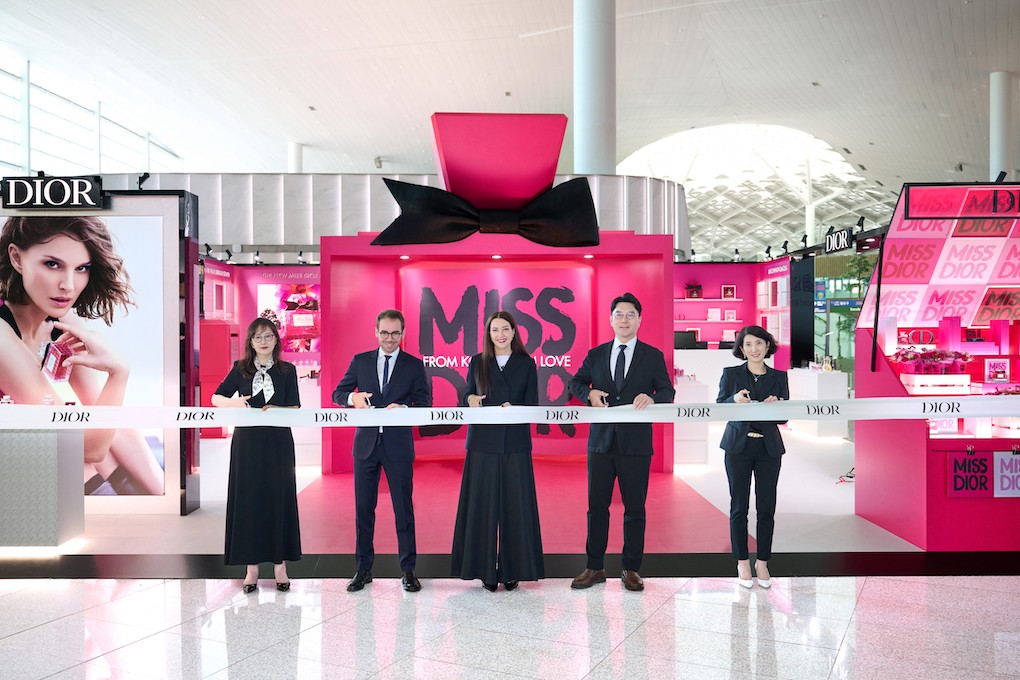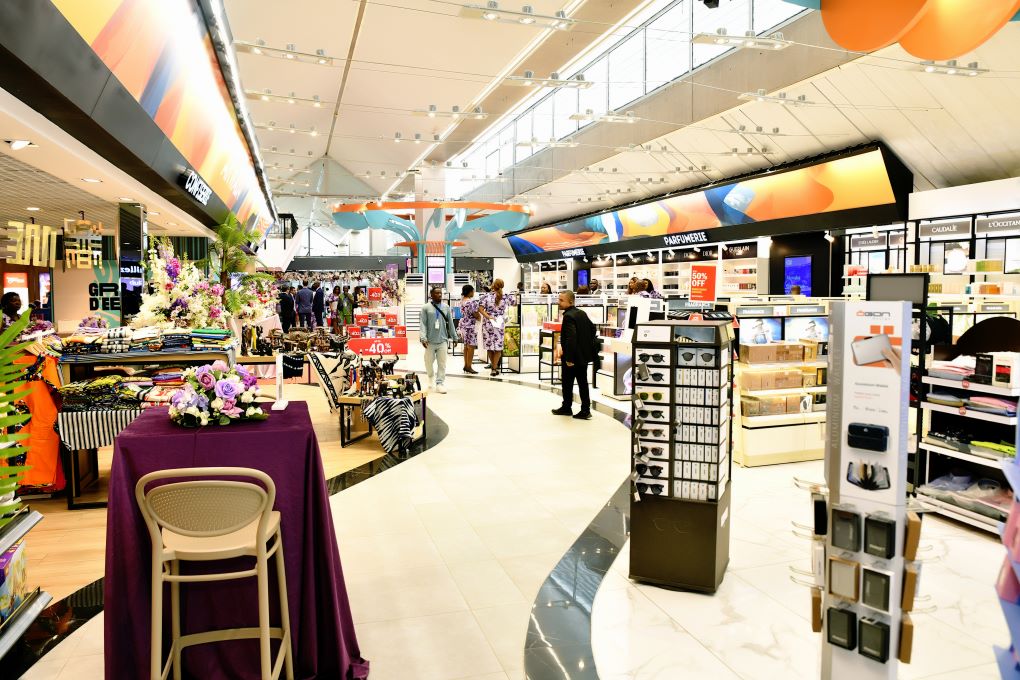
Tokyo-based KOSÉ Corporation is a powerhouse of Japan’s beauty sector, the owner of powerful high-prestige cosmetics brands such as Decorté, Sekkisei, Jill Stuart, Tarte and others, bolstered by a host of prestige brands and cosmetaries.
The family-led, though publicly listed, enterprise is dedicated to ‘Creating Beauty in a Sustainable World’, a key component of its VISION 2026. That programme is designed to position KOSÉ as a company of choice and drive a much-enhanced global presence.
But it will be growth driven by principles and not just financial considerations. In 2020 the group formulated the KOSÉ Sustainability Plan, linking its far-reaching environmental policies to VISION 2026.
Travel retail, aided by the creation of a dedicated subsidiary in 2020, plays an integral role in the company’s ambitious value-creation programme. Martin Moodie flew to Tokyo recently for a rare interview with KOSÉ Group President & CEO Kazutoshi Kobayashi. What ensued was a remarkably candid and compelling insight into the history of one of Japan’s most important brand companies and to the mindset and ideology of one of the country’s foremost business leaders.
Kazutoshi Kobayashi is both a deep respecter of heritage and an ardent moderniser. That blend of leadership philosophy is unsurprising perhaps given that he is the proud third-generation family flagbearer and fourth President for KOSÉ Corporation, a company founded by his grandfather Kozaburo Kobayashi in March 1946.
Kazutoshi Kobayashi has been with the family-held, publicly listed Japanese beauty powerhouse since 1986, becoming President in 2007. During the intervening 16 years he has built on that heritage while driving an innovation agenda around products, technology and ESG principles that have markedly boosted the company’s status within the global beauty industry.
Speaking to The Moodie Davitt Report at KOSÉ Corporation headquarters in Chuo-ku, Tokyo, Kobayashi’s conversation is studded with references to innovation, excellence, a concern for the environment and of integrity in business partnerships. Such values have underpinned the group through almost eight decades and will continue to do so long into the future, he insists.

But while heritage matters deeply to him, Kobayashi is also a disrupter and a globalist. “Ever since I joined this company I was strongly of the view that KOSÉ needed to go beyond Japan and Asia and into a more global market,” he observes.
KOSÉ took its first steps outside Japan in 1968 into Hong Kong but it would be 20 years later before it entered Mainland China, today a crucial stronghold for both local market and travel retail business.
Kobayashi was a key influence in KOSÉ becoming a pioneer among Japanese companies in investing heavily in Mainland China. The focus reflected his desire to balance the intensely competitive Japanese local market – one rendered even more so from the tail of the 20th century by the rapid emergence of a price-driven drugstore channel.

“The strength of our company since its foundation always lay in its high-prestige, high-quality products,” he observes. “But back in the 1990s, we started to see the rise of the drugstore chains doing business extensively throughout the country. By 2000, they had become the main distribution channel here in Japan.”
With its competitors targeting the channel aggressively, KOSÉ was drawn into a fight it neither wanted nor could ultimately win. Moreover, the channel was far removed in approach and ambience from the company’s traditional department store and specialty shop focus.
Going global
The dominance, particular to Japan, of such a low-price channel, accentuated Kobayashi’s desire to globalise the brand but in a premium manner. “My strong belief was based on the importance of us going global with high-quality products, both in travel retail and department stores. We needed to have a much stronger presence in those international markets,” he explains.
The group had precisely the means to achieve those ambitions, Kobayashi believed, in the form of the group’s first luxury brand launched in 1970. But there was one big stumbling block. Its name. What is today Decorté, one of the frontline brands in premium J-Beauty, was then known as Cosme Decorte – a fusion of ‘cosmétique’ and ‘décoration’.

For Western audiences the name was difficult at best and confusing at worst. “It didn’t make any sense to consumers from Europe or the United States,” says Kobayashi. Some American consumers read it as ‘Consume Decorté’ and one Italian connection even thought initially it was a cosmetics line made by a ‘Mr Corte’, he recalls with a chuckle.
In assessing how to globalise the brand and the group, Kobayashi decided to embark on a road trip to some of the greatest department stores on the planet, including Neiman Marcus, Saks Fifth Avenue and Harrods. Reaction from buyers was mixed. They liked the product but its colours and logo were inconsistent and not befitting a front-line international brand.
“I realised I had to root out change in order for Decorté to become a global brand. It wasn’t just about changing the name but about the sales space and packaging design. All that was crucial.”
The problem identified, it became a question of how – and who – to fix it. Kobayashi realised he needed a best-in-class creative director, someone of international standing who would understand KOSÉ’s heritage, culture and values.

He looked around some of the most renowned names in the business before settling on Marcel Wanders, a famed Dutch designer and art director, renowned for his brilliant work across an eclectic array of architectural, interior and industrial projects.

The two men were of a similar age and hit it off immediately. A contract was duly struck and it wasn’t long before the Wanders effect kicked in. The Dutchman came up with the name AQ MW – standing for Absolute Quality Miracle Wonder – to encapsulate a new Cosme Decorte line targeting career-rich women in their 30s. Kobayashi also commissioned him to revamp the brand’s in-store counter designs. The combined impact was dramatic, helping Cosme Decorte to spearhead the burgeoning J-Beauty dynamic.
But the name still rankled. Despite resistance from KOSÉ’s merchandising and planning teams, ‘Mr Corte’ simply had to go, Kobayashi insisted. In 2015, 45 years after the company’s founding, the brand logo of Cosme Decorte was transitioned to Decorté (including the acute accent on the é). “Through this simplified, impactful design, we aimed to create a memorable impression, expanding our recognition and appeal on the world stage,” he explains. It was one of the first big calls Kobayashi made as President and one that has paid off handsomely.
“My vision since I became President has been not just for Decorté to have more presence in the world, but also to bring several such brands to become more known globally,” Kobayashi comments.
That vision has manifested itself in the company’s unrelenting focus on cutting-edge technology to underpin product development across all its beauty products from powder to foundation to serum. That technology found expression in one of KOSÉ’s greatest product breakthroughs.
Unveiling a winner
Kobayashi points to a travel-exclusive Decorté Liposome Advance Repair Serum duo pack on the table in front of us. That product – the first new Decorté Liposome Serum in 29 years – was launched in the Japan local market in September 2021 followed by a global travel retail roll-out the following January.
It was a stunning success, snapping up multiple awards and rapidly becoming the best-selling serum in the key Japanese department store channel ahead of domestic and international rivals.

The new line built on a proud tradition of innovation. Decorté’s hero Liposome Serum, launched in 1992, was the first product to leverage liposome technology in skincare for a long-lasting moisturising effect. The 2021 follow-up, inspired by the idea of a ‘second skin’, is likened in structure to an onion, the serum containing multiple-overlapping layers that hold an abundance of active ingredients, containing one trillion bio-liposomes in a single drop.
The launch was straight from the Kobayashi playbook, accelerating global expansion by developing products based on innovative technology with unique value, then bringing them to market quickly and energetically.
“We have very good technology, for example in emulsifying the products,” he says. “So I was always very confident of our in-house abilities but what I felt we were not so good at was in presenting the brand to the US and European markets in a sufficiently attractive manner. That has been one of the key areas I have focused on since I became the President.
“Even today I consider USP as being very important. I feel that we have to do something that’s unique and original to our company that no-one else has done. And this should be the essence for how we communicate to our customers.
“That’s one of the reasons we decided to feature Shohei Ohtani, the Major League Baseball player [as a face] for our high-end Decorté Liposome. I don’t think anyone would have imagined that he would ever be the face of a high-end serum. So this is a prime example of us expressing our USP and focusing a lot of effort on it.”
Third-generation flagbearer
 For a Japanese family-led business to have flourished through three generations and many tumultuous events ranks as an extraordinary narrative of resilience. I ask Kobayashi whether he feels a particular responsibility, perhaps even a burden, associated with that heritage.
For a Japanese family-led business to have flourished through three generations and many tumultuous events ranks as an extraordinary narrative of resilience. I ask Kobayashi whether he feels a particular responsibility, perhaps even a burden, associated with that heritage.
It’s a question accepted with relish and met with an anecdote. “My grandfather was quite skillful in raising his children and grandchildren,” he replies with a smile. “He had 11 grandchildren, just one girl and the rest all boys.
“His eldest son – my father – originally wanted to pursue a career as an architect, but my grandfather actually had him study chemistry instead so that he could become his successor at KOSÉ.”
The young Kazutoshi Kobayashi monitored what happened between his grandfather and father, from an early age concluding that one day he too would work for the company. “I felt that I could never escape that destiny of going to KOSÉ so for me it was a very natural process that I would join the company after graduating from university.
“So I ended up being here. But I don’t feel a burden in any sense. It’s simply natural. Two of my brothers actually worked in other companies but they too are now working in KOSÉ. Our company remains a family-run business and I’m sure that the founder, my grandfather, had this in mind that the company would be succeeded by family members.”
 Although listed on the First Section of the Tokyo Stock Exchange, the family roots still run both proud and deep. Kobayashi reveals that his grandfather founded the business when he was 50, living until the ripe old age of 98.
Although listed on the First Section of the Tokyo Stock Exchange, the family roots still run both proud and deep. Kobayashi reveals that his grandfather founded the business when he was 50, living until the ripe old age of 98.
“My father, under his father’s Chairmanship, became the President and my uncle now works as the Honorary Chairman of this company. And for myself, having joined KOSÉ right after graduating from university was actually a very good experience. I think this is one of the treasures that I can contribute to the company.”
It’s a lovely story, told with pride. To be the third-generation flagbearer is a privilege and a perennial motivation, Kobayashi says, breaking into another story that says much about that sense of purpose. It’s one he relates frequently to his team in a light-hearted way but which also makes a serious statement about his leadership philosophy.
“I tell them of my experience when I was a student during my high school and university years,” he begins. “Shiseido and Kanebo were the two major Japanese cosmetics companies and they always had big advertisements and were very flashy in whatever they did. For example, they would hire top-notch actresses [as faces] and they were always up-to-date and linked with cultural and fashion trends. They were so brilliant at that time.
“I used to watch and think that in comparison KOSÉ was always kind of low key. The company had very high-quality products but was always very down to earth and never did anything flashy.
“When I was in high school, my friends would actually say to me, ‘You know, your father’s company is rather dorky?’ They would say our packaging was dorky, that Shiseido and other companies were doing so many big things that KOSÉ wasn’t.” The criticism stung. But it had an ultimately invigorating effect. “It actually became one of my prime sources of energy and motivation,” Kobayashi reveals.

There was another source. Foreign competition. “In the ’70s and ’80s a lot of foreign brands came to Japan. European and American brands all entered the market. So many of my female friends from university all went for those foreign brands. And so once again I felt undervalued because KOSÉ was not doing anything flashy like the rest. So that also became one of my prime motivations.”
Against foreign competition
Having joined the company in 1986, Kobayashi watched with concern the growing influence and ultimately dominance of foreign brands, an impetus which accelerated from the late 1980s. Many Japanese department stores were so swayed by the allure and burgeoning consumer demand for these renowned global labels that they started to squeeze shelf space for local houses.
“Basically they started to kick the Japanese brands out from their prime department store cosmetics sales spaces one by one,” Kobayashi recalls. “All the department stores said, ‘Let’s focus on the European and American brands’.
“The department stores started to say, so long as we focus on European and American brands we’re fine. And so they gave all the prime locations to those foreign brands, meaning that all the Japanese domestic brands had been pushed to secondary positions.”

KOSÉ was even kicked out from some leading department stores. “That was one of the major embarrassments that I felt and it became another prime motivation as I realised I needed to do more for this company,” Kobayashi explains.
It was a seminal moment, an existential threat to the very future of the group. But Kobayashi believes KOSÉ had contributed to its own plight by offering the same products in the same packaging to the plethora of general merchandising stores in Japan as it did for the more upscale department stores.
It was a lesson he learned and responded quickly. Today, KOSÉ’s packaging and advertising, sophisticated and vibrant, stands up to that of any of its counterparts worldwide and the house once again enjoys pride of place alongside its Japanese and international peers.
The power of partnership
The transition during Kobayashi’s tenure as President has been profound. With a moderniser at its helm, KOSÉ has evolved from an ultra-conservative enterprise to a tech-driven, innovation-led beauty powerhouse. But key to that evolution, Kobayashi says, is something that has always formed part of the company’s ethos, what he terms “Beauty Partnership”.

Ever since its founding, the company has enjoyed particularly close relationships with its raw material suppliers, a dynamic that was enhanced over the years leading up to COVID and even during the crisis. Because of such tight bonds, KOSÉ’s suppliers have always been quick to offer product innovations to the company first, lending a significant competitive advantage, Kobayashi explains.
The company started to use this slogan of ‘Beauty Partnership’, he says. “What this means is that historically we had placed a lot of focus on close relationships with the suppliers as well as our retailers.” KOSÉ’s partners cherish those relationships, he says, and a lot of innovation springs from them.
Talking travel retail
As The Moodie Davitt Report has witnessed frequently during extensive store visits in Asia over the past two years, KOSÉ’s visibility in the channel has increased exponentially in recent years. That has arisen through a combination of enhanced listings and activations, travel retail exclusives, and impactful in-store and B2B media advertising.

That focus and heavy investment reflects Kobayashi’s long-standing belief in the dual role travel retail plays in terms of sales and global visibility. Once again he draws on history in explaining his view. He explains that back in 1963 his father struck a joint venture agreement with L’Oréal for technological cooperation, an alliance which continued until 2001.
“As a result, my father would often visit France. And whenever he did, he would go to duty free stores and buy all kinds of stuff and bring it back to Japan. I remember seeing that when I was small. But in those days it was mainly alcohol – the likes of foreign whiskeys. He would buy the maximum he could because the savings compared to Japan were so high.”
And then things changed. “All of a sudden I noticed that he started buying Japanese whiskeys instead. The implication was clear. Japanese products were every bit as good as their international equivalents. If Japanese brands could walk with global giants, why not KOSÉ?”
A similar thing happened in Hawaii, where local DFS management had noticed Chinese customers inquiring frequently about KOSÉ’s Sekkisei, which was selling very strongly to Chinese visitors to Japan. The brand was duly listed with great fanfare featuring a Sakura cherry tree blossom activation. But it failed to spark and was eventually delisted. The reason, Kobayashi knew, was that the brand simply did not have sufficiently strong global brand recognition.

“That experience made me think that our brands had to be much stronger globally in order for us to be successful in travel retail,” he recalls. Undeterred, he continued to focus on the channel, success growing commensurately with an expanded local market presence, particularly in China.
In 2020, Kobayashi decided the company should go full throttle into the duty free sector, creating a dedicated division integrated with a by now highly successful amenities business. Due to the pandemic that erupted in the same year, the timing turned out to be less than optimum but the important building blocks are now in place and Kobayashi is particularly bullish about prospects.
“The fact that we took our time in establishing this business doesn’t mean I was underestimating travel retail,” he comments. “In fact, I and my brother [Masanori Kobayashi], who’s now in charge of sales and marketing for our company, started to say around ten years ago that we should be present at TFWA World Exhibition in Cannes.”

The company finally made its long-awaited debut at the 2022 show in Cannes and will be building on it in future years. “We are focusing very much on this area which I see as a prime opportunity for us,” Kobayashi comments. As for the link with the amenities business, that was a natural fit, he says, given the latter channel’s focus on high-end hotels, golf courses and other premium locations.
“There are a lot of inbound tourists and such hotels are a very good touchpoint with them,” he explains. “So if they see the product, use it and like it, it can trigger a purchase in-store.”
Promoting Japan
Kobayashi found another source of motivation when he noticed that luxury Japanese-branded properties were opting to use foreign products in their guest rooms. “I was always questioning why they were using the foreign products when they have so many good brands here in Japan. It was a big question mark in my mind.”
The question eventually found the right answer at the luxury Aman Tokyo, where owner Russian business tycoon Vlad Doronin (who bought the Aman hotel chain in 2014) expressed his admiration for Decorté. His partner, former Russian supermodel Kristina Romanova, found the brand ideal for her sensitive skin, leading the chain to adopt Decorté for its spa products. The Aman Tokyo spa will feature Decorté from December 2023.
The companies have partnered together, with KOSE being an OEM for Aman’s global lifestyle brand albeit under the Aman Essentials name.
“This was a difficult project because the products have to be fragrance-free and suitable for sensitive skin, while at the same time we have to retain the high quality of the Decorté brand.” But the project was well worth it, representing both validation and visibility for Decorté, Kobayashi says.

Following on from Cannes in 2022, KOSÉ is set to make another French debut of a very different kind. This autumn, he points out, Decorté will open with DFS at Samaritaine Paris, the historic LVMH-owned department store. You can almost hear Kobayashi purr with satisfaction as he relates the story. “It is really great news for us and a very good opportunity as we were able to secure a prime place within the store alongside other highly prestigious skincare brands,” he says. A Japanese brand entering a French tower of retail in a city almost synonymous with French beauty products, the days of being ejected from Japanese department stores long consigned to the past.
About Sekkisei
This year KOSÉ brought its entire high-prestige range to Cannes, though Decorté and Sekkisei led the way. “These are the two big brands for us, the ones that we most want to be present globally, for example in duty free stores,” says Kobayashi.
“Sekkisei is targeting a more mass market, meaning it is more of a volume product. It also has a line for those with sensitive skin and the focus is more genderless. So the price range of the two is completely different [Sekkisei is priced just under Decorté’s entry point products -Ed] and that makes a difference in terms of the relative positioning.”
Interestingly, Shohei Ohtani’s mass appeal has ensured a surge in male customers for Decorté, a development that leads our conversation into the rise of genderless projects.
“At various points our team has pondered doing a Liposome or Sekkisei for men but each time the idea came up we chose not to,” Kobayashi reveals.
“But not doing it actually turns out to be a good thing because today we’re talking increasingly about genderless products. It’s not something for men or for women, specifically, but something to accommodate both. I think adaptability in that sense is very important.”

The acquisition of US cosmetics brand Tarte in 2014 has helped shape KOSÉ’s view of the need to serve a diverse audience as the company globalises. “When it comes to the US market, for example with foundation, you need different shades in order to be accepted by the consumer. So that was something we were able to learn by acquiring Tarte.”
The importance of ESG
Diversity forms a key element of the company’s long-held ESG principles, Kobayashi explains, a set of values related to people and planet held long before such matters became commonplace on corporate agendas. An emphasis on environmental sustainability and regeneration is also integral to everything the group stands for.
The company website notes that the KOSÉ Group Committee has formulated seven goals as key environmental indicators in promoting conservation activities. These indicators, which range from reduction of pollutants and waste to improved management of water resources, are reviewed every year in accordance with the results of the previous fiscal year and social needs.
“This is something we have been practicing for many years, even before people started to talk about ESG or sustainability,” Kobayashi comments. “Because since the Corporate Identity (CI) was created back in 1991, for 30-plus years we have been introducing various activities such as SAVE the BLUE in 2009 [whereby a portion of Sekkisei sales is donated to environmental and marine conservation -Ed], thereby protecting the coral reefs in Okinawa, and from there extending it to preservation of the forest.
“We have also been planting mangroves on Hainan Island, so such actions are central to our way of doing things.”

Heating up the M&A programme
The reference to Tarte raises the question of further acquisitions. Are they prominent on the KOSÉ agenda? Yes, indeed, Kobayashi replies. Since acquiring Tarte the company has not completed any M&A activity, something he says must change if KOSÉ is to increase its ranking among the global beauty giants.
He highlights a Euromonitor International ranking that shows KOSÉ as the beauty industry’s 12th biggest player compared with ninth in pre-pandemic 2019. That’s not due to any decline on the group’s part but attributable to extensive acquisitional activity among some of its rivals.
KOSÉ Corporation showcased its flagship Sekkisei brand at the China International Consumer Products Expo (26-30 July) in Haikou
“So I think that it is essential we do more M&A going forward,” Kobayashi observes. “But I want to clarify that we’re not intending to do a major M&A like several of those top players have been doing. That’s not the way we do M&A. Tarte was just small when we acquired it but we were able to nurture them to become a major success, and that’s the kind of the M&A that we’re hoping to do more in future.
“We’re currently 12th in that ranking, and we would like to aim for the top ten – hopefully eight or maybe higher. In order for us to achieve that, Decorté and Sekkisei alone is not going to be enough.
“Therefore we want makeup products and possibly fragrance brands and we also need to build awareness of our strong brand portfolio. To achieve that, we want the travel retail market to see KOSÉ as an attractive company with a range of attractive brands in place that in turn help the wellbeing and beauty of people around the world using our products.
The vibrant, purple-coloured animations in Hainan featured summer-themed beach motifs, highlighting DECORTÉ’s ‘Emulsion First’ message
“So as we target at least a global eight position, I would ask the travel retail market to keep an eye on KOSÉ as we put in our unfailing effort to raise the visibility of our brands.”
Almost 80 years on from when Kozaburo Kobayashi founded the company, KOSÉ has emerged as a very contemporary Japanese and international beauty enterprise brimming with ambition, underpinned by admirable ESG values and clearly poised for strong growth. I suggest his grandfather would be very proud if he could see how the company had turned out.
Those grandfatherly lessons must have been well-learned, for Kazutoshi Kobayashi has done plenty right. In 17 years he has steered the business through economic recession, the impact of the devastating 2011 earthquake and the worst global health crisis in a century.
“History has told me that whenever there were difficult times, after overcoming them, there will be a chance for growth,” he once said in an interview. Times don’t come much more difficult than a global pandemic, so with a clear M&A agenda ahead and a well-articulated strategy for the channel, expect to see a great deal more growth from KOSÉ in travel retail and export markets as the company stretches towards the proud landmark of its 80th anniversary. ✈
This article first appeared in The Moodie Davitt Magazine, click here for access.



